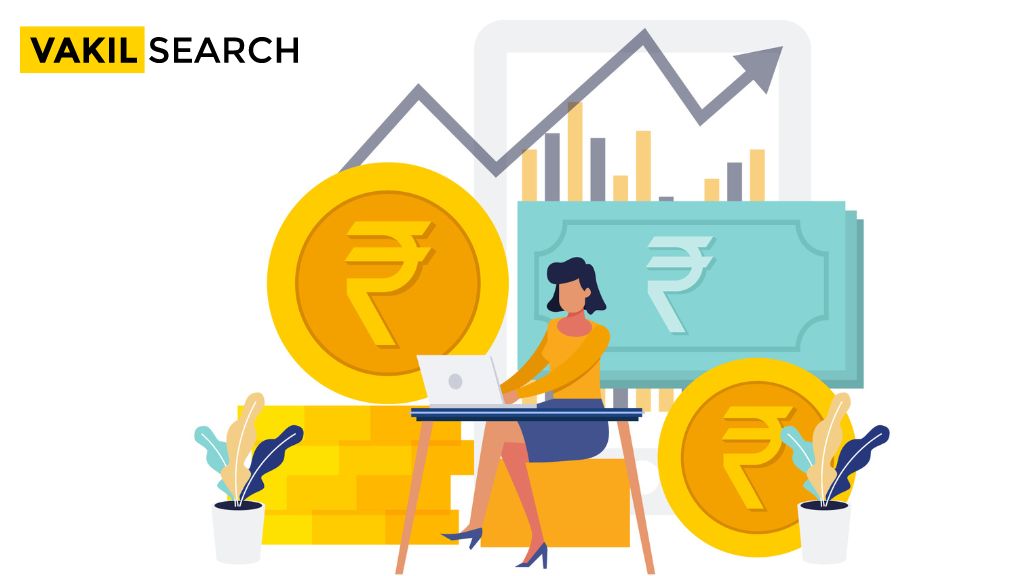Transforming a novel idea into a thriving business demands various stages of startup funding. Entrepreneurs often need financial backing to drive growth, expand operations, and develop innovative products.
Introduction
Transforming a novel idea into a thriving business demands various stages of startup funding. Entrepreneurs often need financial backing to drive growth, expand operations, and develop innovative products. Funding stages is key to startups, as it offers the required capital to scale and reach business objectives. This guide will explore the various startup funding stages, how much funding to seek at each stage, the importance of seed funding, the best time to seek funding, and ways to calculate your startup’s worth during each funding stage.
The Pre-seed Funding Stage
Pre-seed funding is the first stage for startups looking for external financing. At this stage, the business is in its early days, focusing on shaping the idea and doing market research. Pre-seed funding usually comes from personal savings, friends, family, or angel investors who trust the entrepreneur’s vision. The funding at this stage is small but helps build a prototype, validate the idea, and sets the stage for future funding rounds.
Seed Funding Stage
Seed funding follows the pre-seed stage and signifies the first big external funding for the startup. Startups often seek seed funding to spur the development of their products or services, form a team, and kickstart initial marketing. Seed funding is often obtained from angel investors, venture capitalists, or early-stage investment firms. During this stage, entrepreneurs must prove the concept, market potential, and a viable business model to attract potential investors.
Series A Funding Stage
Series A funding is a key milestone for startups that have moved beyond initial stages of product development. Here, the business should have a growing customer base and a clear revenue model. Series A funding supports startups in scaling operations, moving to new markets, and enhancing their product or service offerings. Venture capital firms and angel investors are typical sources of Series A funding. They often require a higher level of demonstrated growth potential.
Series B Funding Stage
The Series B funding stage takes place when the startup has reached a substantial level of success, shown by a proven revenue generation track record and market share gain. The business is ready for rapid growth and requires substantial funding for that. Series B funding is typically used to boost sales and marketing efforts, upgrade infrastructure, and further develop the company’s product or service. Common contributors to Series B funding rounds are venture capital firms, private equity investors, and strategic investors.
Series C Funding Stage
Series C funding stage is about taking the startup to the next level of growth and market dominance. By this stage, the business has established a strong market presence, shown consistent profitability, and possibly moved into new geographies or customer segments. Series C funding is mainly used to increase market share, buy competitors, invest in research and development, and solidify the company’s competitive position. Private equity firms, venture capitalists, and sometimes corporate investors participate in this stage’s funding rounds.
Series D Funding Stage and Beyond
The Series D funding stage, often known as “late-stage” or “expansion-stage” funding, represents funding rounds after Series C. Companies looking for Series D funding are well-established with considerable revenue, and they aim to continue growing or prepare for a potential exit, such as an acquisition or Initial Public Offering (IPO). Funding at this stage may come from a mix of previous investors and new institutional investors.
Initial Public Offering (IPO)
An Initial Public Offering (IPO) is the peak of a startup’s funding journey, transitioning the company from private ownership to public trading. During an IPO, the startup offers shares to the public on a stock exchange, allowing individuals and institutional investors to buy ownership stakes in the company. IPOs provide a significant cash infusion, increase the company’s visibility, and offer exit opportunities for early investors and founders.
How much funding to seek at each stage?
The funding amount a startup should seek at each stage varies greatly based on its needs, market conditions, and growth trajectory. It’s essential to strike a balance between diluting the founder’s ownership and securing enough capital to reach the company’s growth goals.
In the pre-seed and seed stages, entrepreneurs usually seek smaller funding amounts, ranging from thousands to hundreds of thousands of dollars. At the Series A stage, funding needs increase, and startups may raise from a few million to tens of millions of dollars. In subsequent funding rounds, funding needs may reach hundreds of millions or even billions of dollars, depending on the startup’s growth and expansion plans.
Financial planning and projections are crucial to determine the exact funding amount needed at each stage. Talking with experienced investors and mentors can also provide valuable insights into funding expectations for each growth phase.
The Importance of Seed Funding
Seed funding is crucial in the startup ecosystem as it helps convert innovative ideas into tangible businesses. It enables entrepreneurs to take the first steps towards building their product, developing their team, and validating their market. Seed funding often bridges the gap between personal savings and larger institutional funding, offering critical support during the early stages when startups are most vulnerable.
Seed funding investors usually take higher risks compared to later-stage investors. They are interested in supporting promising ideas, passionate founders, and disruptive concepts that could revolutionize industries. Seed funding rounds are key for gaining traction, refining business models, and attracting future investors by showing early signs of success.
The Best Time to Seek Funding for Your Startup
Choosing when to seek funding for your startup is a key strategic decision. Seeking funding too early, when the idea is still raw or the market potential is uncertain, can lead to unnecessary ownership dilution and reduced leverage during future funding rounds. On the other hand, delaying funding for too long may hinder growth opportunities and put the startup at a competitive disadvantage.
The best time to seek funding is when your startup has a clear value proposition, a well-defined target market, and a validated business model. Showing early traction, user engagement, or initial revenue generation greatly enhances the chances of attracting investors.
It’s crucial to balance being well-prepared for funding and not missing the opportunity window. Talking with advisors, industry experts, and potential investors can provide valuable insights into market readiness and the appropriate timing for seeking funding.
Determining Startup Value at Each Funding Stage
Assessing a startup’s value at each funding stage is part art, part science. Unlike established companies with extensive financial history, assessing startups can be tough due to their high-risk nature and limited financial data. Several methods are commonly used to determine startup valuations, including:
- Comparable Transactions: Analyzing the valuations of similar startups in the same industry that recently secured funding or were acquired.
- Discounted Cash Flow (DCF) Analysis: Predicting the startup’s future cash flows and discounting them to their present value to get a valuation.
- Market Multiples: Using industry-specific valuation multiples, such as revenue multiples or EBITDA (Earnings Before Interest, Taxes, Depreciation, and Amortization) multiples, to estimate the startup’s worth.
- Scorecard Method: Comparing the startup’s attributes with standard benchmarks to estimate its value relative to its stage and industry.
- Future Financing Method: Projecting the company’s future funding rounds and valuing the current round based on the dilution and investor expectations in later rounds.
Conclusion
Startup funding stages are critical steps in the journey of turning an idea into a successful business. Each funding stage comes with its own set of challenges and opportunities, and entrepreneurs must navigate them strategically. Getting the right amount of funding at each stage, understanding the importance of seed funding, identifying the best timing for seeking funding, and determining the startup’s value are key factors that shape the startup’s growth and success trajectory. By leveraging the insights and methods The content must be engaging, clear, and concise. The tone must be informative and educative. Avoid complex sentences and jargon. Use simple language that is easy to understand. The content should be organized and structured properly. The sentences should be short and clear. The paragraph transitions should be smooth. The content should be interesting and relevant. The introduction should be captivating. The conclusion should be powerful and compelling.
Also Read:









